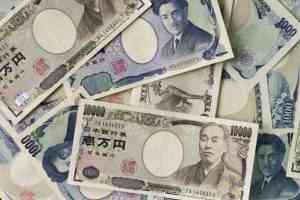How Do Dividends Affect the Balance Sheet?

The company won’t always have actual cash to pay a dividend, even if the retained earnings line item on its balance sheet is positive. Still, some companies will borrow money specifically to pay a dividend during times of financial stress. Retained earnings represent a useful link between the income statement https://online-accounting.net/ and the balance sheet, as they are recorded under shareholders’ equity, which connects the two statements. This reinvestment into the company aims to achieve even more earnings in the future. Retained earnings are the cumulative net earnings or profits of a company after accounting for dividend payments.
- Management and shareholders may want the company to retain the earnings for several different reasons.
- It is because any profits earned is retained and reinvested into the business for future growth.
- If a company’s payout ratio is over 100%, it is returning more money to shareholders than it is earning and will probably be forced to lower the dividend or stop paying it altogether.
- Retained earnings are related to net (as opposed to gross) income because it’s the net income amount saved by a company over time.
- The total amount of cash paid out is $250,000, which is the amount by which both the cash and retained earnings accounts are reduced.
- There is no separate balance sheet account for dividends after they are paid.
In other words, retained earnings and cash are reduced by the total value of the dividend. As an investor, you won’t see the liability entry in the dividend payable account when the dividend is declared. The only thing you’ll notice is the final recording of the reduction in retained earnings and cash. By the time a company releases its financial statements, it’ll have already paid the dividend and recorded it in these two accounts.
Additional Paid-In Capital
After adding the current period net profit to or subtracting net loss from the beginning period retained earnings, subtract cash and stock dividends paid by the company during the year. In this case, Company A paid out dividends worth $10,000, so we’ll subtract this amount from the total of Beginning Period Retained Earnings and Net Profit. Instead, they reallocate a portion of the RE to common stock and additional paid-in capital accounts. This allocation does not impact the overall size of the company’s balance sheet, but it does decrease the value of stocks per share. At the end of each accounting period, retained earnings are reported on the balance sheet as the accumulated income from the prior year (including the current year’s income), minus dividends paid to shareholders. In the next accounting cycle, the RE ending balance from the previous accounting period will now become the retained earnings beginning balance.
For example, assume a company has $1 million in retained earnings and issues a 50-cent dividend on all 500,000 outstanding shares. The total value of the dividend is $0.50 x 500,000, or $250,000, to be paid to shareholders. As a result, both cash and retained earnings are reduced by $250,000 leaving $750,000 remaining in retained earnings. The first income statement line items start with the revenue, which is the money a company receives money for the sales of products and services. Companies spend their revenue on raw materials, salaries, debt repayment, taxes, and several other expenses.
What Causes Changes in Stockholder Equity?
As you can see in the screenshot, GE declared a dividend per common share of $0.84 in 2017, $0.93 in 2016, and $0.92 in 2015. The disadvantage of retained earnings is that the retained earnings figure alone doesn’t what are the types of transaction in accounting provide any material information about the company. Likewise, both the management as well as the stockholders would want to utilize surplus net income towards the payment of high-interest debt over dividend payout.
- Non-cash items such as write-downs or impairments and stock-based compensation also affect the account.
- He is a CFA charterholder as well as holding FINRA Series 7, 55 & 63 licenses.
- Given this crucial role, it’s easy to wonder why companies may choose to pay dividends.
- The remaining 75% of net income that is kept by the company for growth is called retained earnings.
- Now, add the net profit or subtract the net loss incurred during the current period, that is, 2019.
- A dividend is not an expense to the paying company, but rather a distribution of its retained earnings.
A dividend is a share of profits and retained earnings that a company pays out to its shareholders and owners. When a company generates a profit and accumulates retained earnings, those earnings can be either reinvested in the business or paid out to shareholders as a dividend. The annual dividend per share divided by the share price is the dividend yield. Negative retained earnings mean a negative balance of retained earnings as appearing on the balance sheet under stockholder’s equity.
How to Calculate Retained Earnings
The beginning period retained earnings appear on the previous year’s balance sheet under the shareholder’s equity section. The beginning period retained earnings are thus the retained earnings of the previous year. Cash dividends result in an outflow of cash and are paid on a per-share basis.
If the company makes a loss, the shareholders will still be paid a dividend under the policy. The information on retained earnings can be found in the statement of retained earnings. The amount of the dividends and the timeline of payment are decided by the board of directors on the declaration date. The record date is the last date on which the shareholders owning shares of the company receive dividends. The retention ratio is the proportion of earnings kept back in the business as retained earnings.
Wabash National’s (NYSE:WNC) Dividend Will Be $0.08 – Simply Wall St
Wabash National’s (NYSE:WNC) Dividend Will Be $0.08.
Posted: Mon, 04 Sep 2023 10:09:51 GMT [source]
If a company pays stock dividends, the dividends reduce the company’s retained earnings and increase the common stock account. Stock dividends do not result in asset changes to the balance sheet but rather affect only the equity side by reallocating part of the retained earnings to the common stock account. Retained earnings appear on the balance sheet under the shareholders’ equity section. When stock dividends are paid, there is no impact on the cash position of the business. If the corporation issues less than 25 percent of the total amount of the number of previously outstanding shares to shareholders, the transaction is accounted for as a stock dividend.
Why Is the Dividend Payout Ratio Important?
In publicly held companies, retained earnings reflects the profit a business has earned that has not been distributed to shareholders. If you didn’t skim through the above section, you likely noticed the link between dividends and retained earnings. A company profits, distributes some of them to shareholders as dividends, and keeps the rest as retained earnings to be reinvested.
These materials were downloaded from PwC’s Viewpoint (viewpoint.pwc.com) under license. Adam Hayes, Ph.D., CFA, is a financial writer with 15+ years Wall Street experience as a derivatives trader. Besides his extensive derivative trading expertise, Adam is an expert in economics and behavioral finance. Adam received his master’s in economics from The New School for Social Research and his Ph.D. from the University of Wisconsin-Madison in sociology. He is a CFA charterholder as well as holding FINRA Series 7, 55 & 63 licenses.

For example, during the period from September 2016 through September 2020, Apple Inc.’s (AAPL) stock price rose from around $28 to around $112 per share. During the same period, the total earnings per share (EPS) was $13.61, while the total dividend paid out by the company was $3.38 per share. A dividend is a distribution made to shareholders that is proportional to the number of shares owned. A dividend is not an expense to the paying company, but rather a distribution of its retained earnings.
You must cCreate an account to continue watching
Companies are extremely reluctant to cut dividends since it can drive the stock price down and reflect poorly on management’s abilities. If a company’s payout ratio is over 100%, it is returning more money to shareholders than it is earning and will probably be forced to lower the dividend or stop paying it altogether. On the other hand, an older, established company that returns a pittance to shareholders would test investors’ patience and could tempt activists to intervene. In 2012 and after nearly twenty years since its last paid dividend, Apple (AAPL) began to pay a dividend when the new CEO felt the company’s enormous cash flow made a 0% payout ratio difficult to justify. Since it implies that a company has moved past its initial growth stage, a high payout ratio means share prices are unlikely to appreciate rapidly.

Likewise, a net loss leads to a decrease in the retained earnings of your business. Finally, there is one situation in which a company can pay a dividend even with negative retained earnings. If the company is wrapping up its operations, then it can make dissolution or liquidation dividend payments to shareholders regardless of the condition of its balance sheet. Cash dividends are the payments a corporation makes to its shareholders as a return of the company’s profits. Paid on a per-share basis, only the shareholders on record by a certain date are entitled to receive the cash payout. Dividends and retained earnings are closely linked, since dividend payments come from those earnings.
What are Dividends?
A company that declares a $1 dividend, therefore, pays $1,000 to a shareholder who owns 1,000 shares. New companies typically don’t pay dividends since they’re still growing and need the capital to finance growth. However, established companies usually pay a portion of their retained earnings out as dividends while also reinvesting a portion back into the company. Companies that make a profit at the end of a fiscal period can use the funds for a number of purposes.

